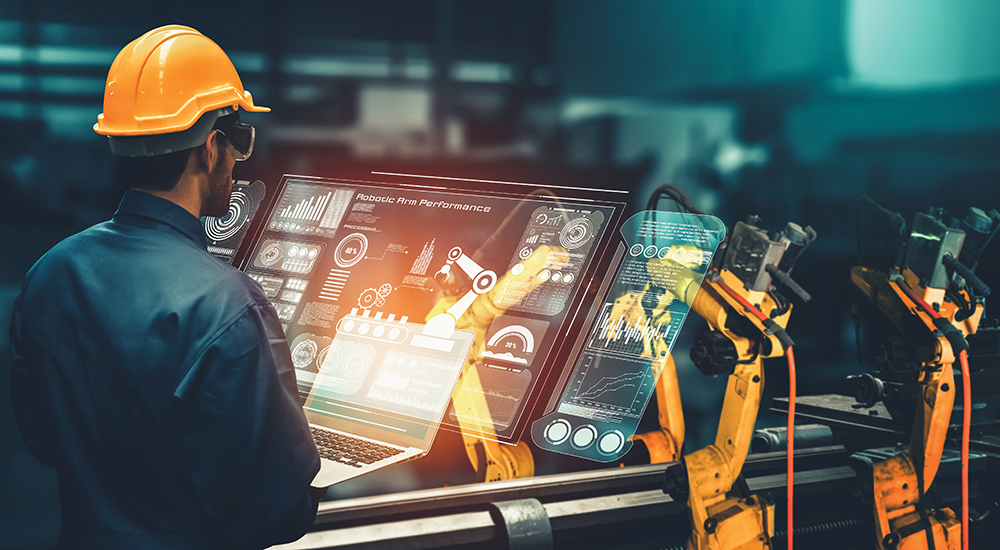
What was a labor-intensive, time-consuming process now has become a streamlined and efficient operation through the use of robotics, artificial intelligence, and smart manufacturing system integration. The shift is boosting productivity, improving quality, cutting costs, and ensuring worker safety. With manufacturers under even more pressure to provide fast, cheap, and reliable vehicles, the competitive edge of automation is crucial. From robotic arms working on car frame assembly down to machine-learning algorithms predicting maintenance issues, every aspect of the assembly line is now being transformed by automation.
Streamlining Assembly Processes with Robotics
The automotive industry has experienced many visible transformations due to automation. Robotic arms and machines perform manual, repetitive, and often strenuous activities such as welding, painting, and installation of parts. Robotic machines perform their tasks with accuracy and repeatability, thereby minimizing human error and cycle time. Unlike their human counterparts, robots do not need to break and can work continuously, providing higher output and shorter turnaround times. Today’s robots are flexible and programmable, meaning that manufacturers can quickly reconfigure their robots to build new models without inflicting any massive changes on the production sequence. Because of this flexibility, automakers can call the shots on production after strategizing market demand and changes in consumer preferences. Nowadays, automotive manufacturers can assign repetitive tasks to machines, while their human workforce is engaged in smarter and value-added tasks, consequently developing a more optimized workforce in the process. Therefore, robotics has become the backbone of automotive manufacturing, whereby speed and quality are the two main advantages.
Enhancing Quality Control with Machine Vision
Quality control is essential in the automotive business, where a minor defect could cost millions in recalls and safety problems. With automation stepping in, however, production quality assurance has improved over this final stretch through machine vision technology. These systems employ high-resolution cameras as well as image-processing software to examine parts and assemblies with microscopic accuracy. The machine vision system is designed to detect defects such as misalignment, scratches, or absent details much more reliably and faster than the human eye can. Therefore, machine vision systems can inspect thousands of parts per hour, allowing manufacturers to maintain high output yet stay true to quality. The data recorded by these systems may also be examined for recurring problems, allowing engineers to implement corrective measures before substantial loss can take place.
Improving Worker Safety and Ergonomics
While automation has replaced many manual tasks, it has also been a key factor in enhancing safety and working environments along the assembly line. By performing dangerous or strenuous tasks: heavy lifting, repetitive motion, or exposure to fumes, automation mitigates the chance of workplace injuries. Collaborative robots, or cobots, work together with humans in a shared workspace under controlled conditions for tasks that require strength in combination with precision. With less injury and a better working environment, the industry gets to enjoy lower employee turnover, less downtime, and greater employee morale. Hence, automation goes beyond just facilitating productivity and contributes to creating a more hygienic and sustainable work environment.
Flexible in Production
An automotive manufacturer often has to face the challenge of producing several vehicle models and variants to go with the requirements of the market. Industrial automation provides the very needed flexibility to allow for this variety without having to change the entire assembly line. Modular robotic setups and programmable logic controllers allow for quick changeover from one production run to another. Automated guided vehicles and flexible conveyors can dynamically route components and subassemblies only as needed to eliminate bottlenecks and optimize flow efficiently. Furthermore, automation software renders real-time tracking and adjustment of changes to minimize disruption. Such maneuverability is of utmost priority for automakers that must stay calm in the rapidly changing waters of new trends, regulatory requirements, or supply chain disruptions. With automation, the manufacturers give themselves the capacity for product customization, scaling production up or down, and enabling innovation rapidly without compromising consistency and quality.
The Last Word
Industrial automation is coming fast into the realm of automobiles because, indeed, a new type of innovation, productivity, and quality could ever have been conceived in the head of old-time thinkers. From robotics, which is performing the major revolution in assembly processes, to machine vision systems ensuring rigid quality control, automation is converting the flexible and efficient domain of the automotive assembly line into a solid reality. Click here apart from improving productivity and reducing costs, automation is meant to produce cars that will be made as reliable, sustainable, and responsive to transforming consumption preferences as other products. There lie all beautiful pages of the coin with further exceptional revelations in predictive maintenance, data analytics, and customization. Thus, the future of manufacturing automobiles will be on the shoulders of individuals willing to carry such responsibilities; increasingly, the larger garnet of that future will be showpiece-by-these-faculties.